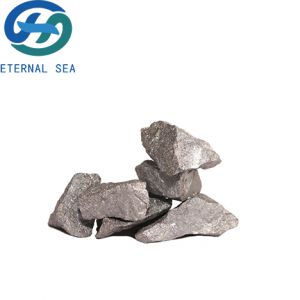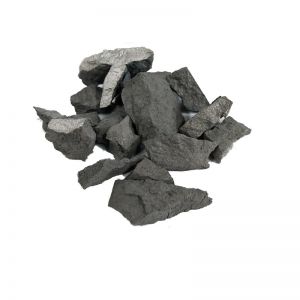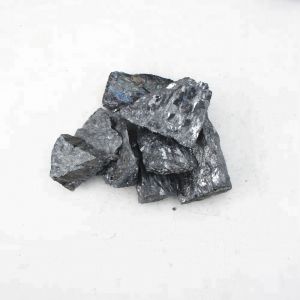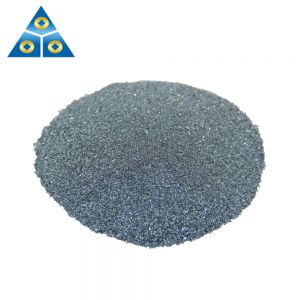Silicon-calcium alloys
Silicon calcium alloy is a composite alloy composed of elements silicon, calcium and iron, and is an ideal composite deoxidizer and desulfurizer. It is widely used in the production of high-quality steel, low-carbon steel, stainless steel and other steel grades and special alloys such as nickel-based alloys and titanium-based alloys; it is also suitable as a warming agent for converter steel refining workshops; it can also be used for cast iron. Inoculants and additives in ductile iron production.
Uses: Calcium and silicon have strong affinity with oxygen, especially calcium, which not only has a strong affinity with oxygen, but also has a strong affinity with sulfur and nitrogen, so silicon-calcium alloy is an ideal composite Glue oxygen, desulfurizer. Silicon alloy not only has strong deoxidation ability, and the deoxidized products are easy to float and discharge, but also can improve the properties of steel, and improve the plasticity, impact toughness and fluidity of steel. At present, silicon-calcium alloys can replace aluminum for final deoxidation. It is used in the production of high-quality steel, special steel and special alloys, such as rail steel, low carbon steel, stainless steel and other steel grades and nickel-based alloys, titanium-based alloys and other special alloys, all of which can be used as deoxidizers. Silicon-calcium alloy is also suitable as a warming agent for converter steel refining workshop. Silicon-calcium alloy can also be used as an inoculant for cast iron and an additive in the production of ductile iron.
【 Product introduction】
1. Silicon-calcium alloys
A binary alloy composed of silicon and calcium, which belongs to the category of ferroalloy. Its main components are silicon and calcium, and it also contains various amounts of impurities such as iron, aluminum, carbon, sulfur and phosphorus. Iron and steel industry is used as calcium additive, deoxidizer, desulfurizer and modifier of non-metallic inclusions. Cast iron industry is used as inoculant and denaturant. Silicon-calcium alloys are classified according to the content of calcium and silicon:
Grade Ca Si
Ca31Si60 31 50 65
Ca28Si60 28 50 65
Ca24Si60 24 55 65
Ca20Si55 20 50 60
Ca16Si55 16 50 60
Other impurities are otherwise specified according to different uses. In addition, on the basis of the silicon-calcium alloy, other elements are added to form a ternary or multi-component composite alloy. Such as SiCaAl; SiCaMn; SiCaBa, etc., used as deoxidizer, desulfurizer, denitrification agent and alloying agent in iron and steel metallurgy.
2. Brief History
French Botzel General Electrochemical Company used the electro-silicon thermal method in about 1907, and then used the electro-carbothermal method to produce silicon-calcium alloys in an electric furnace. China smelted calcium silicon in a calcium carbide factory in Taiyuan in the 1950s. In 1964, Beijing Ferroalloy Factory successfully researched the process of smelting silicon-calcium alloy by layered feeding method.
3. Nature
Calcium is an alkaline earth metal, the atomic weight is 40.08, the outer electronic structure is 4S2, the density (20℃) is 1.55g/cm3, the melting point is 839℃, and the boiling point is 1484℃.
4. Features Advantages:
The response is stable, and the processing operation is easy to use and operate;
The chemical composition is uniform, the performance is excellent, and the impurity content is low;
There are many product varieties and specifications, which can meet the needs of users
Hot News
- How is silicon metal made, the main grade classification and application areas?
- Why ferrosilicon price risen? What is the current price of Ferro silicon?
- 5th CIS Ferroalloys Conference (Sep 2019), Ardahan Turkey
- How is silicon metal made, the main grade classification and application areas?
- The 25th CRU Ryan's Notes Ferroalloys Conference
- What you should know about silicon 553 specifications and uses
- What's FerroEast.com?
- The role of ferrosilicon in steelmaking
- The industry's flagship ferroalloys conference 2019(Budapest)
- North American Ferroalloys 2019
-

Anyang eternal sea ferro silicon deoxidizer for steel making fe silicon
$1,000.00 - $1,300.00 / Metric Ton
-

Nitrided Ferro Chrome Nitrided FeCr 60% for Stainless Steel
$1,200.00 - $2,500.00 / Ton
-

Hot Sale CaSi Metal / Calcium Silicon / Calcium Silico Alloy
$1,000.00 - $1,500.00 / Ton
-

Refractory Raw Material Silicon Metal Powder 200mesh
$1,000.00 - $2,000.00 / Metric Ton
